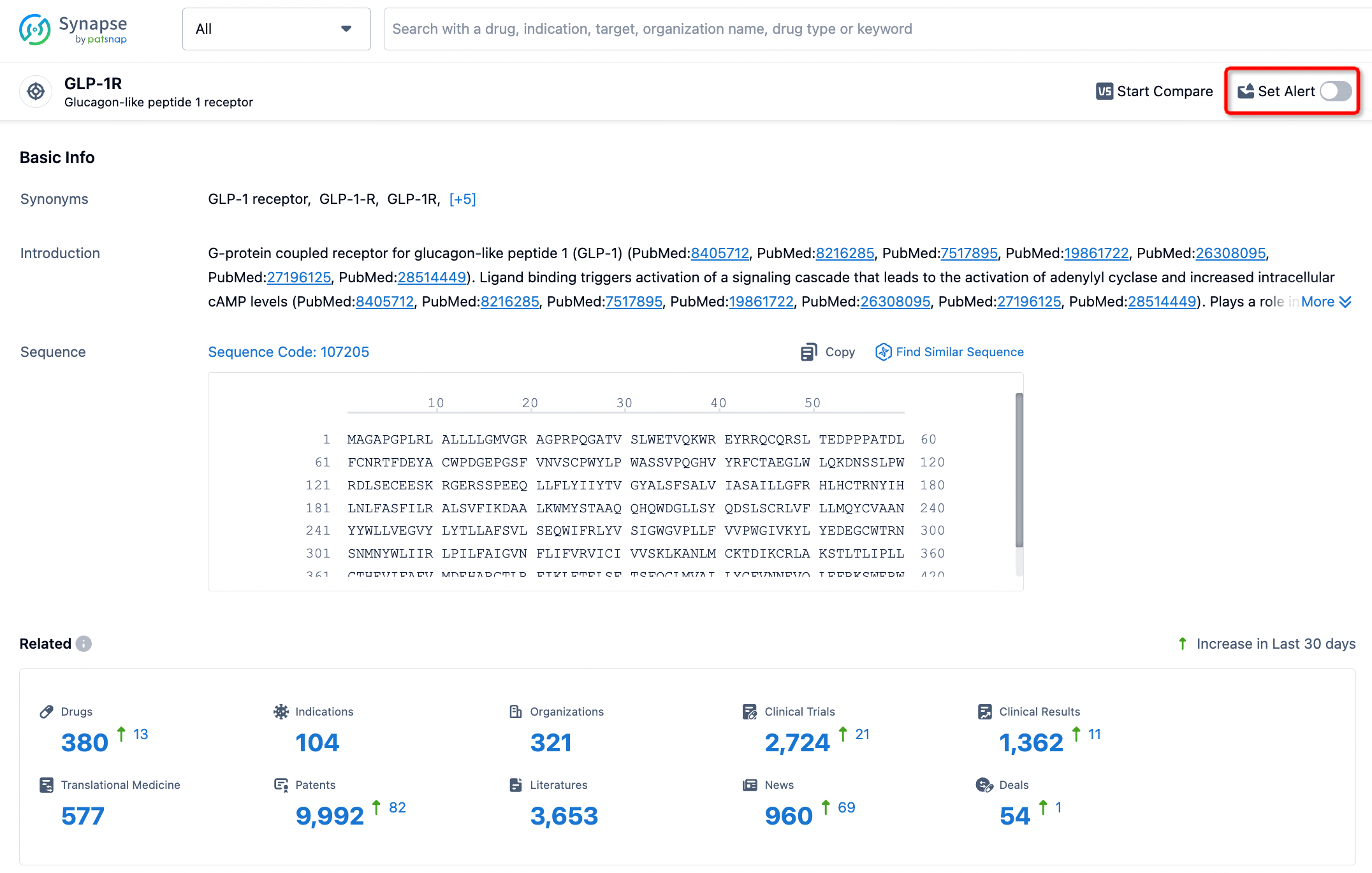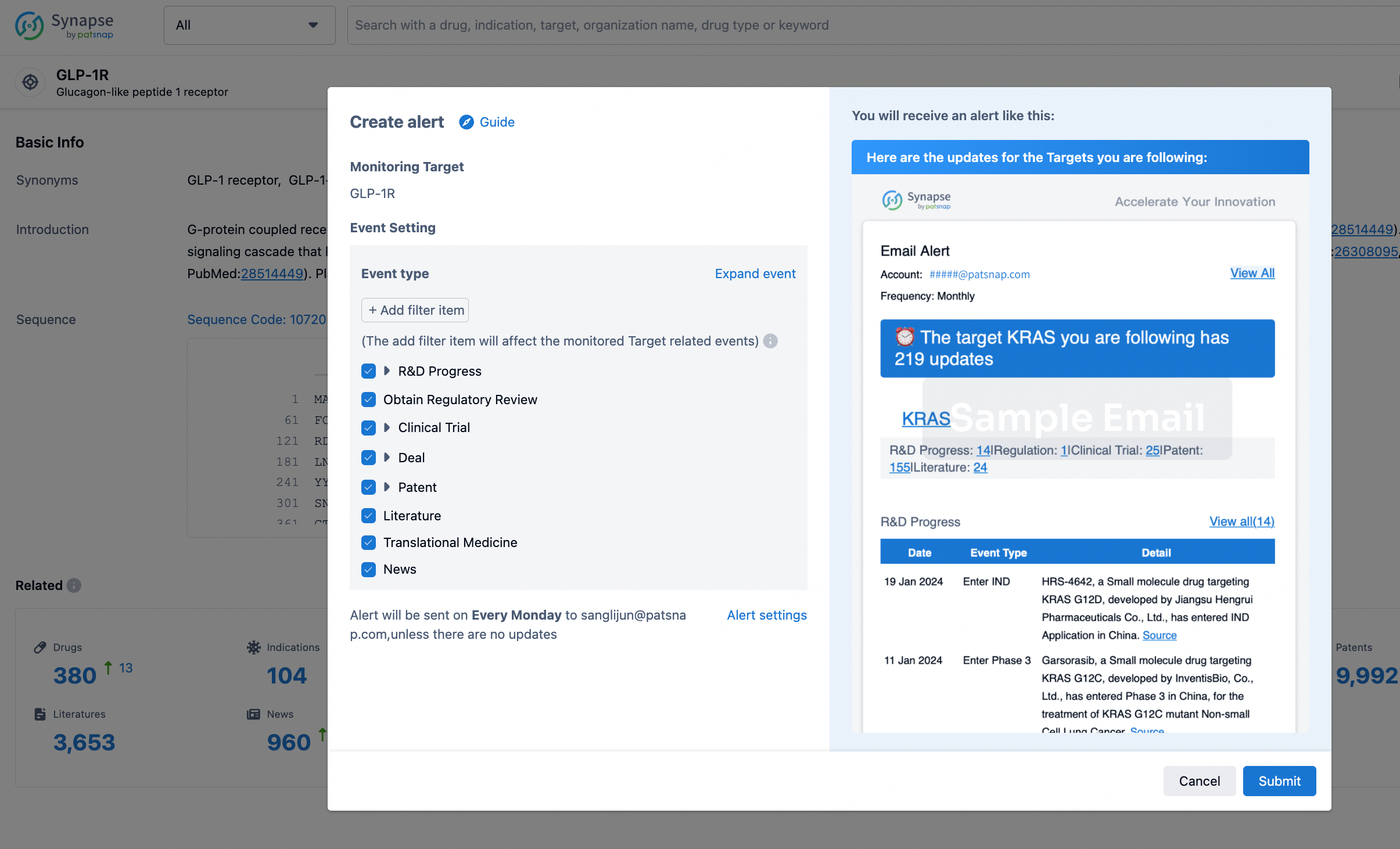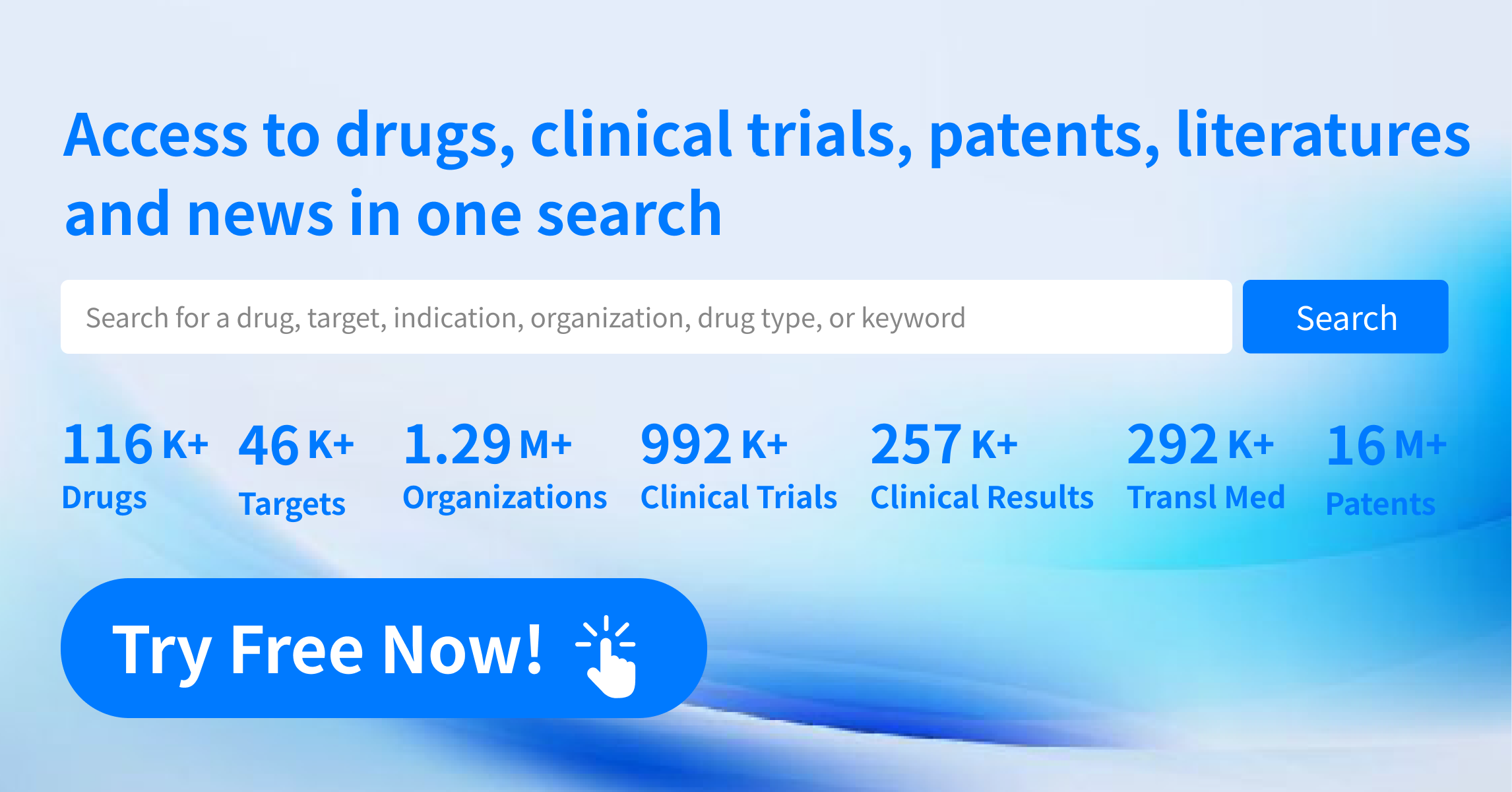Request Demo
What are Glutamates antagonists and how do they work?
21 June 2024
Glutamate antagonists are a fascinating and crucial class of drugs in the field of neuroscience and pharmacology. Understanding how these agents work and their applications can provide valuable insights into their therapeutic potential and the mechanisms underlying various neurological disorders. This blog post will explore what glutamate antagonists are, how they function, and their wide range of uses in medical science.
Glutamate is the primary excitatory neurotransmitter in the central nervous system. It plays a pivotal role in normal brain function, including cognition, memory, and learning. However, excessive glutamate activity can lead to excitotoxicity, a condition where neurons are damaged and killed due to overstimulation. This excitotoxicity is implicated in several neurological conditions, such as Alzheimer's disease, Parkinson's disease, stroke, and epilepsy. Glutamate antagonists, therefore, serve as a protective mechanism by inhibiting the overactivation of glutamate receptors, thereby preventing neuronal damage.
To understand how glutamate antagonists work, it is essential to delve into the mechanics of glutamate receptors. There are three main types of glutamate receptors: AMPA receptors, NMDA receptors, and kainate receptors. Each of these receptors plays a specific role in neurotransmission and has distinct properties and functions. Glutamate antagonists can target any of these receptors to inhibit their function.
NMDA receptors, for example, are particularly well-studied because they allow calcium ions to enter the neuron, which can trigger a cascade of intracellular events leading to cell death if not properly regulated. NMDA receptor antagonists work by binding to the receptor and preventing glutamate from activating it. This inhibition can protect neurons from excitotoxicity, thereby preserving their function and viability.
AMPA receptor antagonists operate similarly but target the AMPA receptors. By inhibiting these receptors, they reduce the influx of sodium ions into the neuron, which also helps to mitigate the risk of excitotoxicity. Kainate receptor antagonists work on a different receptor subtype but share the same fundamental goal of reducing excessive glutamate activity.
The therapeutic applications of glutamate antagonists are broad and varied, encompassing a range of neurological and psychiatric disorders. One of the most significant uses is in the treatment of neurodegenerative diseases. For example, memantine, an NMDA receptor antagonist, is commonly prescribed for Alzheimer's disease. By inhibiting excessive glutamate activity, memantine helps to slow the progression of cognitive decline in patients.
Another critical application is in the management of stroke. During a stroke, excessive glutamate is released, leading to neuronal damage. Administering glutamate antagonists can help protect the brain from this damage, improving outcomes for stroke patients. Similarly, these agents can be beneficial in traumatic brain injury, where they can help to reduce the extent of neuronal damage and improve recovery prospects.
Glutamate antagonists also show promise in the treatment of epilepsy. By inhibiting glutamate receptors, these drugs can help to reduce the hyperexcitability of neurons that leads to seizures. Topiramate, for instance, is an anticonvulsant that acts as both an AMPA and kainate receptor antagonist, providing effective seizure control for many patients.
In the realm of psychiatric disorders, glutamate antagonists are being explored as potential treatments for conditions like depression and anxiety. There is growing evidence suggesting that dysregulated glutamate signaling plays a role in these disorders. By modulating glutamate activity, these antagonists could offer new avenues for treatment, particularly for patients who do not respond to traditional therapies.
In conclusion, glutamate antagonists represent a vital area of pharmacological research with significant therapeutic potential. By inhibiting excessive glutamate activity, these drugs can protect neurons from excitotoxicity and offer relief for a range of neurological and psychiatric disorders. As our understanding of glutamate signaling and its implications for brain health continues to grow, so too does the promise of glutamate antagonists in improving patient outcomes and enhancing quality of life.
Glutamate is the primary excitatory neurotransmitter in the central nervous system. It plays a pivotal role in normal brain function, including cognition, memory, and learning. However, excessive glutamate activity can lead to excitotoxicity, a condition where neurons are damaged and killed due to overstimulation. This excitotoxicity is implicated in several neurological conditions, such as Alzheimer's disease, Parkinson's disease, stroke, and epilepsy. Glutamate antagonists, therefore, serve as a protective mechanism by inhibiting the overactivation of glutamate receptors, thereby preventing neuronal damage.
To understand how glutamate antagonists work, it is essential to delve into the mechanics of glutamate receptors. There are three main types of glutamate receptors: AMPA receptors, NMDA receptors, and kainate receptors. Each of these receptors plays a specific role in neurotransmission and has distinct properties and functions. Glutamate antagonists can target any of these receptors to inhibit their function.
NMDA receptors, for example, are particularly well-studied because they allow calcium ions to enter the neuron, which can trigger a cascade of intracellular events leading to cell death if not properly regulated. NMDA receptor antagonists work by binding to the receptor and preventing glutamate from activating it. This inhibition can protect neurons from excitotoxicity, thereby preserving their function and viability.
AMPA receptor antagonists operate similarly but target the AMPA receptors. By inhibiting these receptors, they reduce the influx of sodium ions into the neuron, which also helps to mitigate the risk of excitotoxicity. Kainate receptor antagonists work on a different receptor subtype but share the same fundamental goal of reducing excessive glutamate activity.
The therapeutic applications of glutamate antagonists are broad and varied, encompassing a range of neurological and psychiatric disorders. One of the most significant uses is in the treatment of neurodegenerative diseases. For example, memantine, an NMDA receptor antagonist, is commonly prescribed for Alzheimer's disease. By inhibiting excessive glutamate activity, memantine helps to slow the progression of cognitive decline in patients.
Another critical application is in the management of stroke. During a stroke, excessive glutamate is released, leading to neuronal damage. Administering glutamate antagonists can help protect the brain from this damage, improving outcomes for stroke patients. Similarly, these agents can be beneficial in traumatic brain injury, where they can help to reduce the extent of neuronal damage and improve recovery prospects.
Glutamate antagonists also show promise in the treatment of epilepsy. By inhibiting glutamate receptors, these drugs can help to reduce the hyperexcitability of neurons that leads to seizures. Topiramate, for instance, is an anticonvulsant that acts as both an AMPA and kainate receptor antagonist, providing effective seizure control for many patients.
In the realm of psychiatric disorders, glutamate antagonists are being explored as potential treatments for conditions like depression and anxiety. There is growing evidence suggesting that dysregulated glutamate signaling plays a role in these disorders. By modulating glutamate activity, these antagonists could offer new avenues for treatment, particularly for patients who do not respond to traditional therapies.
In conclusion, glutamate antagonists represent a vital area of pharmacological research with significant therapeutic potential. By inhibiting excessive glutamate activity, these drugs can protect neurons from excitotoxicity and offer relief for a range of neurological and psychiatric disorders. As our understanding of glutamate signaling and its implications for brain health continues to grow, so too does the promise of glutamate antagonists in improving patient outcomes and enhancing quality of life.
How to obtain the latest development progress of all targets?
In the Synapse database, you can stay updated on the latest research and development advances of all targets. This service is accessible anytime and anywhere, with updates available daily or weekly. Use the "Set Alert" function to stay informed. Click on the image below to embark on a brand new journey of drug discovery!
AI Agents Built for Biopharma Breakthroughs
Accelerate discovery. Empower decisions. Transform outcomes.
Get started for free today!
Accelerate Strategic R&D decision making with Synapse, PatSnap’s AI-powered Connected Innovation Intelligence Platform Built for Life Sciences Professionals.
Start your data trial now!
Synapse data is also accessible to external entities via APIs or data packages. Empower better decisions with the latest in pharmaceutical intelligence.


